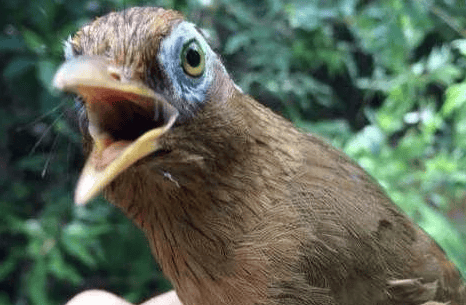The domestication of the thrush’s head.
1. The domestication method of "naturally fixing the cage when the fire starts"
This method does not require any cage training, and there is no need to let the bird meet familiar people during the entire process before starting the fire. of training. The method is:

1. Feeding with cloth and accompanying the mother bird. Multiple cages of male birds can be placed on a floor or in a room, and one or two female birds can be placed next to them. However, the male birds will not be seen and only heard.
2. When bathing, place the female bird next to the male bird so that the male bird can meet. You can also wash the male and female birds together in a cage.
3. After some fires, you can let the two male birds face each other and "chirp" at home, accompanied by the female bird, in order to promote the fire. After a fire breaks out, the fire sparrow should be raised in another room within one or two weeks and should be taken out for a walk in a timely manner.
Opinion: The thrush is not afraid of people once it becomes popular, and there is no need for special cage training with acquaintances. The advantages of this method are short domestication period and high yield. It is most suitable for bird traders or novice bird lovers. Disadvantages: The finches trained by this method have weak anti-interference ability and cannot withstand the tossing. It is difficult to raise them if they are passed on to others. There are also many finches with weak fire, and they often cannot compete in noisy and crowded environments. Yes, the re-cageability is not as good as those that are raised without the mother bird.

2. The domestication method of "first fix the cage, then start the fire"
1. When a new bird enters the cage, it should first settle down and be kept closed for a certain period of time. After the bird settles down, place it in a place where it can see people but is not too noisy. Open a small amount of cage cloth. After a period of adaptation, open more cages. Depending on the characteristics and domestication needs of the bird, the cage may even be fully clothed. This method does not accompany the mother bird, just one mother bird in a room is enough. Birds often change places. The density of birds in a room should not be high. It is best to only place one or two birds to prevent male birds from seeing each other frequently.
2. After the bird is not afraid of people and has been caged for a while, you should pay attention to the behavior of the bird. If you find that the bird sings softly while running water and shows signs of fire when no one is around, place it in another place and start raising it in time. stroll.
Opinion: This method of bird training has a long cycle and a low birth rate. Except for a few downhill red birds, it usually takes one change of domestic feathers before they can be seen singing softly or having sex, and some have to change twice. , three times of domestic hair testing the breeder’s patience. However, the sparrows domesticated by this method have strong anti-interference ability and can withstand tossing. They can compete in large-scale competitions in crowded and noisy places. They are less likely to slide and boring, and they do not recognize their place. They will not be raised or raised by anyone else (except for a few individuals). Quewai with special character) can cultivate warriors who can withstand the torment of big scenes. This method is more suitable for people who have in-depth research interests in raising and hunting birds.
The above two methods of raising newly born finches have their own advantages and disadvantages. Those who are eager for quick success will obviously choose the first domestication method. Those who have in-depth research interests in cultivating thrush finches and those who pursue cultivation People who can't stand the hard work of playing big games will probably choose the second taming method.
Combining the two methods will produce much better results.

 扫一扫微信交流
扫一扫微信交流
发布评论